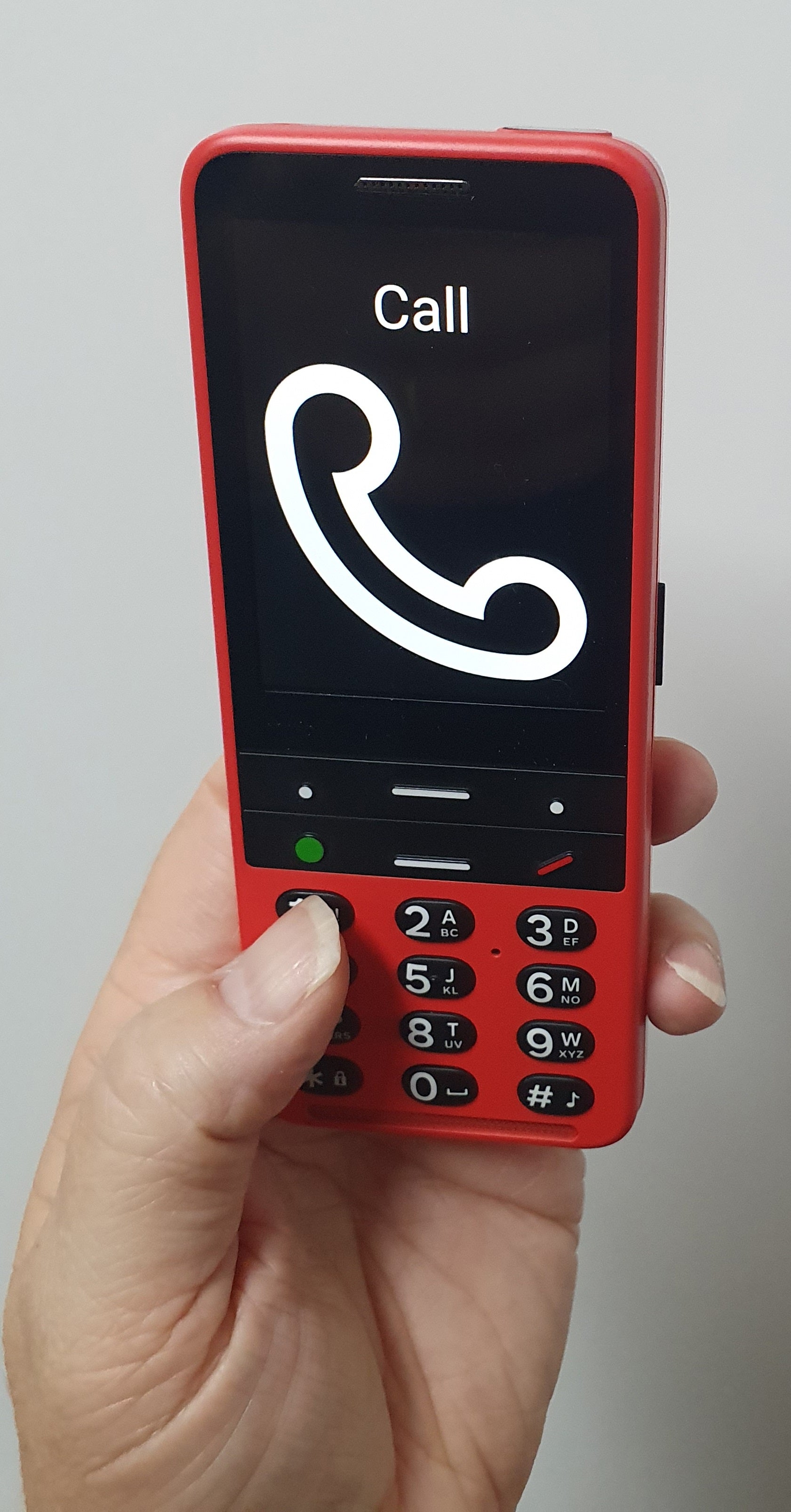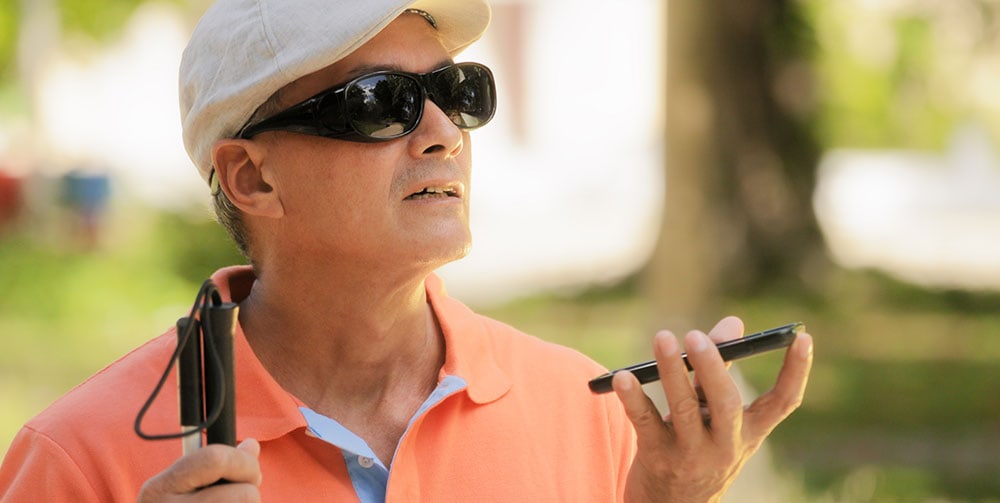AI-Powered Visual Aids: Redefining Support for the Blind
Wiki Article
Discover Cutting-edge Tools Developed for the Aesthetically Damaged
The development of ingenious tools for the visually impaired stands for a substantial advancement in accessibility and independence. Technologies such as smart glasses with AI capabilities and mobile applications made to give acoustic descriptions are reshaping everyday experiences for individuals.Smart Glasses for Navigation

Smart glasses designed for navigation are transforming the method aesthetically damaged people connect with their environment. These advanced gadgets use a combination of cam modern technology, expert system, and acoustic feedback to offer real-time information about surroundings. By employing obstacle detection systems, clever glasses can notify individuals to prospective risks, allowing much safer movement in both strange and familiar setups.
The assimilation of GPS modern technology better improves navigation abilities, allowing users to obtain acoustic directions as they relocate. This hands-free approach not just fosters freedom yet likewise equips visually damaged individuals to navigate city landscapes with boosted confidence. Additionally, numerous clever glasses are outfitted with functions that identify spots and road signs, providing contextual information that boosts the individual experience.
Furthermore, the growth of these tools is continually advancing, with companies functioning to improve the precision of item acknowledgment and broaden the range of navigational functions. As smart glasses come to be much more accessible and budget-friendly, they hold the potential to significantly change every day life for aesthetically damaged individuals. Inevitably, these ingenious tools stand for a vital action toward inclusivity, offering boosted mobility and a higher feeling of freedom for people browsing the world around them.

Mobile Apps for Daily Living
Exactly how can mobile applications improve the daily lives of aesthetically damaged individuals? Mobile applications are transforming the way aesthetically damaged users browse their atmospheres, manage day-to-day jobs, and accessibility details. These applications offer important assistance with various capabilities, promoting freedom and boosting high quality of life.Several cutting-edge mobile apps are made particularly for day-to-day living. For example, applications like Be My Eyes link visually damaged users with sighted volunteers by means of video phone calls, permitting them to receive real-time assistance with tasks such as reviewing labels or browsing unfamiliar areas. Similarly, Seeing AI, created by Microsoft, utilizes expert system to define surroundings, checked out message, and identify items, properly transforming a smartphone into an effective device for daily support.
Additionally, navigation apps tailored for the visually impaired, such as Aira and BlindSquare, provide audio-based directions and ecological info, making it possible for customers to traverse their environments securely and with confidence. Beyond navigating and immediate help, mobile applications also sustain organization and job monitoring, with attributes that aid customers establish tips, create order of business, and track visits. In summary, mobile applications serve as vital sources, equipping aesthetically impaired people to lead more independent and meeting lives.
Wearable Technologies for Assistance
Empowerment through technology is increasingly noticeable in the world of wearable gadgets developed to help aesthetically damaged people. These ingenious tools incorporate effortlessly into everyday life, enhancing navigating and giving crucial comments to individuals. For instance, smart glasses equipped with electronic cameras can identify faces and check out text aloud, allowing users to connect even more confidently in social and specialist settings.Another remarkable improvement is making use of haptic responses systems in wearable gadgets. These systems utilize vibrations or various other tactile signals to communicate information regarding the customer's atmosphere, such as challenges or changes in surface, improving wheelchair and safety. Wearable innovations additionally consist of wristbands that link to smart devices, signaling users to alerts with refined vibrations, therefore boosting connectivity without dependence on aesthetic cues.
As these innovations remain to develop, they are not only enhancing freedom for visually impaired people yet also promoting a higher sense of addition in culture. By linking the gap between difficulties encountered in day-to-day living and the potential for freedom, wearable innovations act as crucial devices in the quest for equality and empowerment for those with visual disabilities.
Audio Description Tools
Audio summary devices play an essential function in improving access for visually impaired individuals, supplying them with the capacity to involve with aesthetic media. Voice-activated assistive devices. These devices offer narrated summaries of key visual elements in films, television shows, and live performances, ensuring that users can totally comprehend the context and emotions communicated through visualsAudio summary can be incorporated into different systems, including streaming services, cinema testings, and live movie theater. Lots of prominent streaming services currently consist of audio summary as an accessibility attribute, enabling audiences to select it easily. Along with traditional media, specialized applications also exist, providing audio summaries for art exhibits, museums, and various other cultural events.
The performance of audio description depends upon the ability of the narrators, who have to communicate visual information succinctly without interfering with the original sound. Technologies in this field are also leading the way for even more customized experiences, where individuals can readjust the level of detail and pacing according to their choices.
Braille Innovations and Gadgets
Braille technologies and gadgets have significantly changed the way aesthetically impaired people communicate with message and info. Modern advancements have led to the development of functional tools that boost literacy and freedom among individuals.
Furthermore, mobile Braille notetakers incorporate conventional Braille input with modern-day performances, facilitating note-taking, scheduling, and record editing on the move. Assistive technology for the blind. These small tools frequently include text-to-speech capabilities, connecting the space in between Braille and auditory information
Additionally, innovative Braille printers have actually arised, allowing users to create Braille tags, records, and educational materials successfully. This access promotes higher engagement in professional and academic atmospheres, inevitably promoting inclusivity.
In addition, research into smart Braille technologies continues to broaden. Tools that integrate expert system are being checked out to supply real-time navigating aid and contextual information, boosting the customer experience in varied setups. Overall, these advancements show a commitment to equipping visually impaired individuals via modern technology, guaranteeing they can conveniently access and involve with the globe around them.

Verdict
The advancement of innovative devices for the aesthetically damaged significantly improves self-reliance and top quality of life. Smart glasses, mobile applications, wearable innovations, audio summary devices, and Braille innovations collectively encourage individuals by offering crucial navigation assistance, environmental understanding, and enhanced analysis experiences. These modern technologies not just foster higher incorporation but also promote freedom in daily activities, ultimately adding to an extra fair and obtainable culture for aesthetically damaged people. Proceeded growth in this area holds assurance for more enhancements.As smart glasses come to be extra budget friendly and obtainable, they hold the prospective to considerably transform day-to-day life for visually impaired customers. Mobile apps are revolutionizing the means visually impaired customers navigate their environments, take care of everyday jobs, and gain access to information. Applications like Be My Eyes link aesthetically damaged users with sighted volunteers by means of video clip phone calls, permitting them to get real-time assistance with jobs such as reading tags or navigating unknown rooms.In addition, navigation applications tailored for the aesthetically impaired, such as Aira and BlindSquare, use audio-based directions and ecological information, allowing users to traverse their environments safely and with confidence.The development of cutting-edge tools for Braille displays and notetakers the aesthetically impaired substantially boosts self-reliance and quality of life.
Report this wiki page